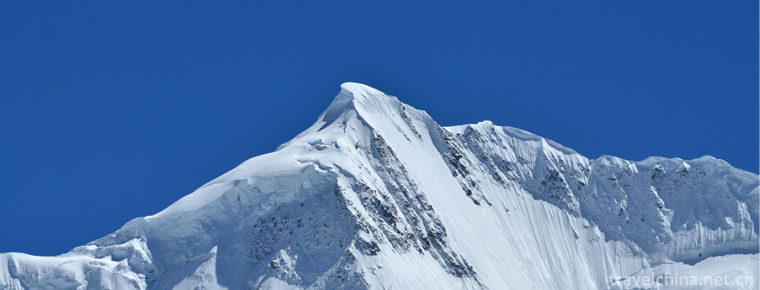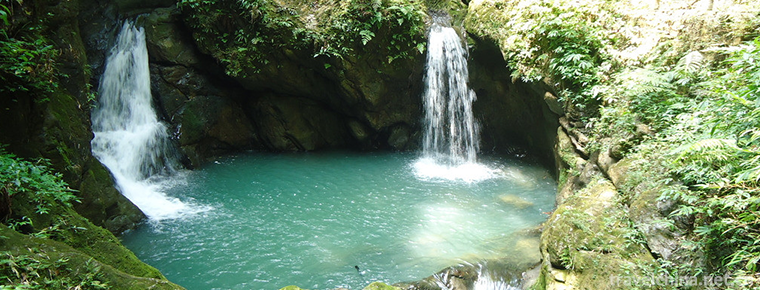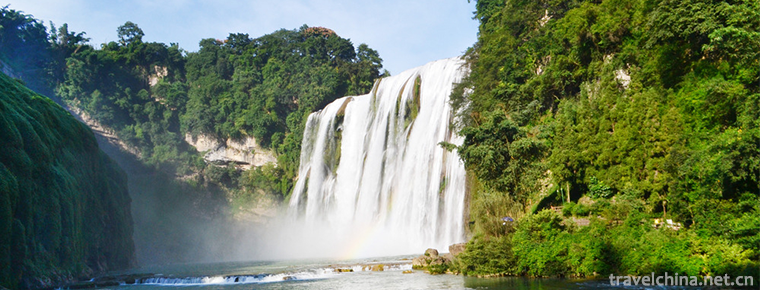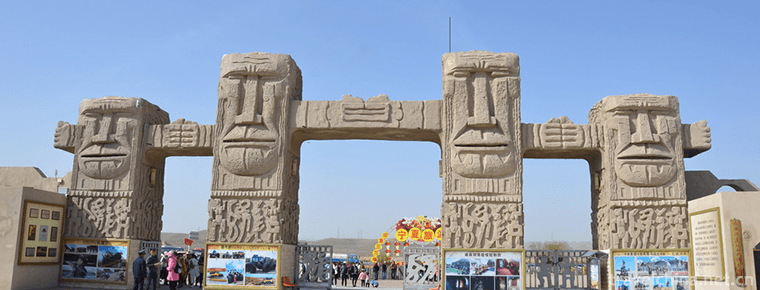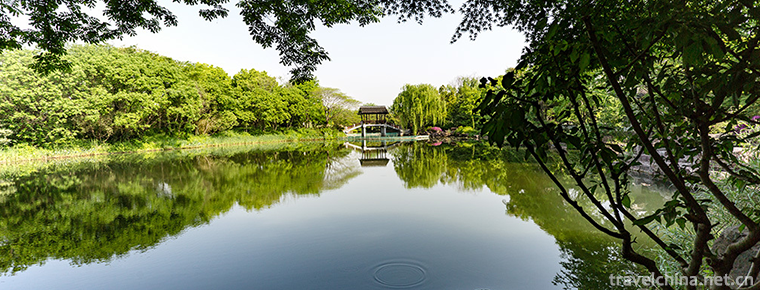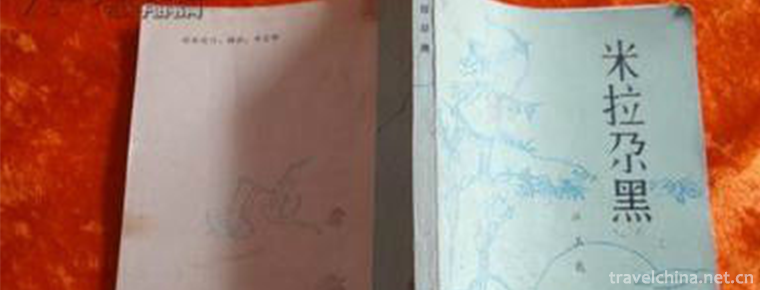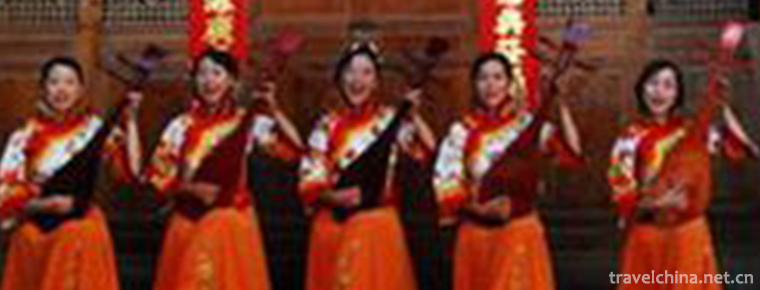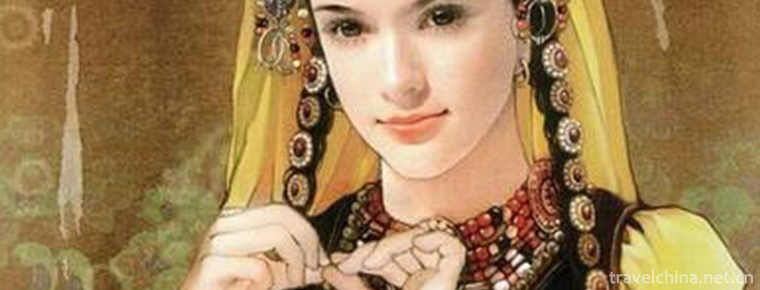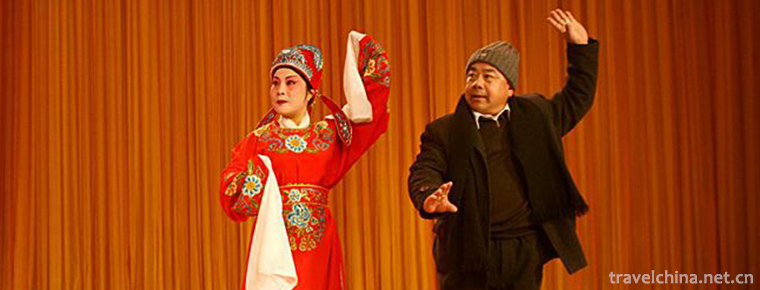Jiayuguan cultural relics scenic spot
Jiayuguan: World Cultural Heritage, National AAAAA Tourist Scenic Spot, National Key Cultural Relics Protection Unit, National Patriotic Education Demonstration Base.
Jiayuguan is located in the middle of the narrowest Valley 5 kilometers west of Jiayuguan City, Gansu Province. The city walls on both sides of the city pass through the desert gobi, connecting the Great Wall of Heishan in the north and the first pier in the south. It is the gateway of the west end of the Great Wall of the Ming Dynasty. It was once called the throat of Hexi in history. Because of its dangerous terrain and magnificent architecture, it is called the first grand gateway and the key to the border. Jiayuguan is the first important gateway at the western end of the Great Wall in Ming Dynasty, and also the transportation fortress of the ancient Silk Road. It is known as one of the three wonders of the Great Wall of China (Shanhaiguan in the east, Beitai in the town in the middle and Jiayuguan in the west).
Jiayuguan was built in 1372 AD. It is composed of inner city, outer city, Luocheng, Wengcheng, trench and the Great Wall on both sides of the north and south. It is about 60 kilometers long. Great Wall terraces, piers and castles are scattered all over the world. They are composed of three defensive lines: inner city, outer city and trench. They form a defensive system of five miles and one flint, ten miles and one pier, thirty miles and one castle, and one hundred miles and one city.
The main scenic spots of Jiayuguan are Jiayuguan City, the hanging wall Great Wall, the first pier of the Great Wall, the tombs of Wei and Jin Dynasty, the stone carvings of Heishan, Mulan City, the "July 1" glacier and gliding base. Most of Jiayuguan scenic spots are closely linked to the Great Wall culture and Silk Road culture, and have their own characteristics. For many years, they have been the places that Chinese and foreign tourists yearn for.
Main attractions
Jiayuguan Great Wall Museum
Jiayuguan Great Wall Museum is the first museum in China with the theme of Great Wall history and culture. The original museum was built in October 1989 in Jiayuguan city. Located in Jiayuguan Cultural Relics Scenic Area, the new museum was built on May 1, 2003. It covers an area of 4523.36 square meters with a total floor area of 3499 square meters. The cultural relics exhibition of Jiayuguan Great Wall Museum is implemented according to the national standard of Class II and Class A Museum. The cultural relics exhibition fully utilizes modern scientific and technological techniques such as sound, light and electricity. It is equipped with advanced domestic facilities such as voice simultaneous translation system, automatic monitoring system, automatic constant temperature system, automatic fire alarm system and tourist inquiry system. It is a leading level in provincial museums. 。
The First Pier of the Great Wall
That is to say, Laihe pier. Built in 1539 by Li Han, Bingbeidao, Suzhou, it was the first pier of the Great Wall of the Ming Dynasty from west to east, the starting point of the western end of the Great Wall of the Ming Dynasty, and an important part of the Great Wall defense system of Jiayuguan. It is 7.5 kilometers north of Guancheng. The pier stands on a cliff nearly 80 meters high beside the Chaolai River. It can be said that it is the first dangerous pier in the world. The first pier scenic spot of the Great Wall has magnificent natural scenery, with Jiuquan in the east, desert in the west, Jiayu in the north and Qilian in the south.
Nine eye Springs Lake
At the foot of the magnificent city of Jiayuguan, there is a clear spring named "Nine Eye Springs", which is not named after nine eyesprings. In a single number, "nine" is the largest, "nine" and "long" homonym, so the name of nine eyesprings, take its spring eyes numerous, endless meaning. "Nine Eye Springs" beside the water and grass rich, pleasant scenery, is a good place in ancient times to raise horses, Garrison and prevent frontier disasters. After historical changes, "Nine Eye Spring" once dried up. Later, in the spring breeze of the western development, "Nine Eye Spring" reappeared its former shadow, rippling blue waves, clear to the bottom. The beauty of "Nine Eye Springs" lies in its quietness and quietness.
Heishan Stone Carving Group is a modern stone carving group imitated by masons, which shows the long history and culture of Jiayuguan. Montenegro Stone Sculpture Group has seven parks to visit. They are celebrity inscription garden, ancient poetry garden, chronicle garden, story garden, guerrilla general stone carving garden, brick and mural stone carving garden of Wei and Jin tombs, and Heishan stone carving garden.
geographical environment
Jiayuguan City is a temperate arid climate with a large annual temperature difference. The annual average temperature is about 6 C, and the annual precipitation is more than 80 mm. The coldest temperature in January, the absolute minimum temperature - 28.6 C, the hottest in July, the absolute maximum temperature 38 C. May to October is the best tourist season in Jiayuguan.
Historical culture
Jiayuguan Great Wall is a national key cultural relic protection unit. The southern part of Jiayuguan is Qilian Mountain, with snow peaks stretching thousands of miles, while the northern part is Longshou Mountain and Mazhao Mountain, which confront Qilian Mountain and live in the west of Hexi.
The spirit of Jiayuguan lies in the word "Guan". The whole Guancheng is divided into three layers: the outer city, the urn city and the inner city. The structure is ingenious and can be said to be solid.
Outside Guancheng, new Great Wall is still being built. These man-made landscapes make it impossible for future generations to tell who is real and who is false. They do not know whether it is a blessing or a curse. The Great Wall Museum beside it is worth visiting. Many cultural relics and introductions are refreshing.
Jiayuguan City is well preserved and its architecture is very vigorous.
There are two flourishing food streets in Jiayuguan city. One is to revitalize the market, the other is to mirror iron market. Most of all kinds of noodles are noodles.
Jiayuguan tourism resources are most famous for Jiayuguancheng, Wei and Jin mural tombs, the first pier of the Great Wall, the hanging wall, the Great Wall Museum and the rock paintings of Montenegro. Jiayuguan, located in the middle of the ancient Silk Road, is the Western starting point of the Great Wall of the Ming Dynasty. She is located in the Qilian Mountains to the South and the Mazhao Mountains to the north. The Great Wall connects the two mountains, making Jiayuguan a major gateway between the East and the west. Jiayuguan is surrounded by many historic sites and famous scenic spots. The Mogao Grottoes, Jiayuguan City Tower, the Great Wall, the July 1st Glacier, the Tombs of Wei and Jin Dynasty, together with the local night cup, large plate melon seeds, camel velvet and other Tute crafts, make Jiayuguan an important tourist attraction.
The altitude of Jiayuguan area is generally more than 1600 meters. It is dry and rainless all the year round. The annual average precipitation can only be kept at about 80 millimeters, while the evaporation is more than ten times of the precipitation, which poses a great threat to the garrison and survival of the army and civilians. However, compared with the environment of the Northwest plateau, Jiayuguan is a small basin surrounded by high, middle and low, and its water source mainly comes from Qilian Snow Peak and glacier. Qilian meltwater converges in the form of surface runoff and river valley subsurface flow, and Jiayuguan becomes a place where water sources are concentrated. There is water under Jiayuguan Pass, known as Jiuyanquan. Nine is the limit of the number. It does not mean the number here, but there are many springs. When Feng Sheng's army was stationed on this land, it was the spring under Jiayu Mountain that attracted them first, and the material basis of human civilization in Jiayuguan area for thousands of years was also the continuous clean water. "Brief Records of the Frontier of Qin Dynasty" contains: "When there is water at the beginning, then the customs will be built, and then the buildings will be built, then the Great Wall will be built, and then the Great Wall will be maintained."
Jiayuguan is the starting point of the west end of the Great Wall of the Ming Dynasty. It is the most magnificent and well-preserved ancient military Castle along the Great Wall of the Ming Dynasty. It is an important military fortress along the Great Wall of the Ming Dynasty and its later generations. It is known as the "Great Defense at Home and Abroad" and the "First Pass in Hexi".
Jiayuguan is located in the central and western part of the Hexi Corridor (west-central part), which has a history of 631 years. It was built nine years earlier than Shanhaiguan. In the early Ming Dynasty, Song Guogong and General Feng Sheng, on the way to the triumphant return of Banshi, chose the central part of the Hexi Corridor, with Jiuquan in the east, Yumen in the west, Heishan in the back, and Jiayu Highland in the south. Guancheng was built in Hongwu, Ming Dynasty (1372 AD), which lasted 168 years and was completed in 1540 AD. As the historical material "Brief Records of the Qin Border" notes: "When there is water at the beginning, then the customs will be closed, and then the buildings will be built, then the Great Wall will be built, and then the Great Wall will be built, and then the Great Wall will be maintained." The layout of Jiayuguan City is reasonable and the building is proper. Guancheng has three walls, multiple lines of defense, city inside and trench outside, forming a great city and defending the trend. It is composed of Neicheng, Oucheng, Luocheng, trench and three three-storey, three-eaves, Xieshan top-style high-rise Pavilion building, trench, Great Wall Peak and so on. The inner city is the main and center of Guancheng, with a circumference of 640 meters and an area of 25,000 square meters. Outside the East and West gates of the inner city, there are urn cities, covering an area of more than 500 square meters. The gate of the city of Weng opens to the south. To the west of the city of Xiweng, Luocheng is built. To the middle of the city wall of Luocheng, the gate is closed to the west. The lintel of the gate is inscribed with the words "Jiayuguan". The existing buildings in Guancheng mainly include guerrilla general mansion, Guanjing, Guandi Temple, stage and Wenchang Pavilion. The city of Jiayuguan is close to the mountains and rivers. It guards the canyon area about 15 kilometers wide in the north and south. The Chaolai River Valley in the south of the canyon also forms the natural barrier for customs defense. There are 66 piers and abutments in the east, west, south, north and northeast of Guancheng. Jiayuguan, with its natural terrain and both offensive and defensive capabilities, has formed a strict military defense system with the nearby Great Wall, platform, trench, beacon and other facilities, and is also known as the "No. 1 Pass in the World".
Practical information
Black Mountain Stone Sculpture Group
Ticket information
Explaining fare
Explain the charging standard (tourists can choose voluntarily):
1. Jiayuguancheng: 50 yuan for less than 10 people and 5 yuan for more than 10 people.
2. Great Wall Museum: 50 yuan for less than 10 people, 5 yuan for more than 10 people.
3. Suspended Wall Scenic Spot: the whole journey (climbing the top) is less than 50 yuan for 10 people, one more person charges 5 yuan for more than 10 people, 25 yuan for less than 10 people for half-way (not climbing the top), and 5 yuan for more than one person for more than 10 people.
Tickets for Jiayuguan Cultural Relics Scenic Spot
1. Off-season time and tickets: from November 1 to April 30, next year, 100 yuan per person (including postage Postcard 1 yuan);
2. Time and tickets for peak season: 120 yuan per person (including postage Postcard 1 yuan) from May 1 to October 31;
Tickets to visit scenic spots include Jiayuguancheng (Great Wall Museum), the first pier of the Great Wall and the hanging wall of the Great Wall.
Preferential information
1. Ticket-free visits for children under 1.2 meters in height, disabled persons, servicemen and elderly persons over 70 years old (with their identity cards);
Half-price discount is offered for individual visits to senior citizens aged 60-69, children aged 1.2m-1.4m, minors aged 6 years (excluding 6 years) and minors aged 18 years (including 18 years), full-time undergraduates and students with less than 18 years of education (except adult education with student certificates).
Scenic spot accommodation
Travel to Jiayuguan, there are many hotels to choose from, especially around the railway station, more than 100 yuan can be accommodated in standard rooms with good conditions. There are also four buses near Jiayuguan City, which is very convenient to travel. If you want to better understand the local customs, you can choose to stay in the homes of residents (especially ethnic minorities), and the cost is cheaper than the hotel.
Clothing Guide
There is a big temperature difference between morning and evening in Jiayuguan. No matter which season you come here, please prepare an extra coat in line with the season. In summer, ultraviolet radiation is strong, sunscreen and sunglasses are ready; in spring and autumn, the wind and sand are strong, so please prepare sand-proof equipment. If winter comes here, the first priority is to prevent cold and keep warm.
Traffic information
Internal traffic
Public Transportation Guide for Free Access to Scenic Spots
1. Bus routes: 4 routes and 6 routes
Destination Station: City Building
Ticket price: 1 yuan per person
After getting off the bus, walk to Jiayuguan Cultural Relics Scenic Area
2. Direct mode of arrival provided by travel agencies: one-day tour special line
Jiayuguan City-First Pier of Jiayuguan Great Wall/Jiayuguan Suspended Wall
Cost (round trip): 50/person
Drive: 30 minutes
Traffic Guidelines for Self-driving to Scenic Spots
Approach: Jiayuguan Municipal Government - Xinhua South Road - Yingbin East Road - Huandao - Xinhua South Road - Huandao - Xinhua Central Road - Lanxinxi Road - Guancheng South Road - Jiayuguan Cultural Relics Scenic Area (on the left side of the road)
Time required: 1-2 hours
External traffic
aviation
Jiayuguan Airport, located 12 kilometers northeast of Jiayuguan City, is a 4D class and E class international airway reserve and landing airport. It has opened routes in Beijing, Tianjin, Shanghai, Guangzhou, Hangzhou, Lanzhou, Xi'an, Chengdu, Urumqi and Dunhuang.
Railway
Jiayuguan Railway Station is located on Yingbin West Road, 5 kilometers southwest of the city centre. It can reach Urumqi, Lanzhou, Beijing, Shanghai, Zhengzhou, Chengdu, Xi'an and other cities directly. It can also reach Moscow and other Nordic countries through the Eurasian Continental Bridge, through Alashan Pass in Xinjiang. The two-way train from Jiayuguan to Lanzhou is very convenient. Take bus No. 1 from the city to the railway station. The ticket office of Jiayuguan Railway Station is located at No. 8-2 Lanxin Middle Road.
Highway
Jiayuguan has G30 Lianhuo Expressway and 312 National Highway across the whole territory, east to Lanzhou and west to Urumqi, with smooth and broad secondary road surface. The total length of the highway in the territory is 452 kilometers. It runs northward to the border port of Mazongshan to Mongolia and southward to Golmud, Qinghai Province. Jiayuguan Bus Station is located at the junction of Shengli Middle Road and Lanxin West Road. Every day there are buses to Lanzhou, Wuwei, Jinchang, Zhangye, Yumen Town, Urumqi, Anxi, Linxia and other places.
Because Jiayuguan City is very close to Jiuquan City, there is public interaction. Jiuquan is located at Xiguan Cross near Jiuquan City Hospital, and Jiayuguan is located at the Cultural Palace of Jiayuguan City. The bus fare is 3 yuan.
It takes about half an hour to go to Jiuquan by bus and about six and a half hours to Dunhuang.
City traffic
transit
There are 135 buses and 44 new energy buses operating in Jiayuguan city, of which 5 are oil-electric hybrid new energy buses. There are 306 employees, including 188 drivers, 22 managers, 96 operation dispatch, image monitoring, road monitoring, ticket counting, IC card customer service center, vehicle maintenance, cleaning and security personnel. There are 12 bus lines and one bus line (Dongxing Aluminum Bus Line), the total length of which is about 170.7 kilometers; 368 bus stations, 304 standardized waiting booths; and the average daily passenger traffic is about 73,000. In the urban area, bus No. 4 and No. 6 can reach Jiayuguan Cultural Relics Scenic Spot directly.
lease
Jiayuguan City tourist attractions are very close to the city, there is no bus to the attractions, so you need to take a taxi to the attractions. The taxi starts at 6 yuan and can be watched. A proposal for a longer journey is to negotiate the price in advance.
The first pier of Jiayuguan Great Wall is 7.5 kilometers away from the urban area.
Jiayuguan hanging wall Great Wall Scenic Area is 7.5 kilometers away from the urban area.
Jiayuguan Weijin Folk Culture Tourist Area is far from the urban area.
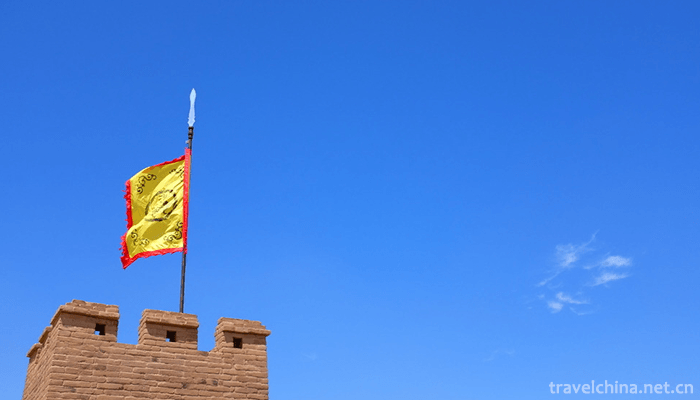
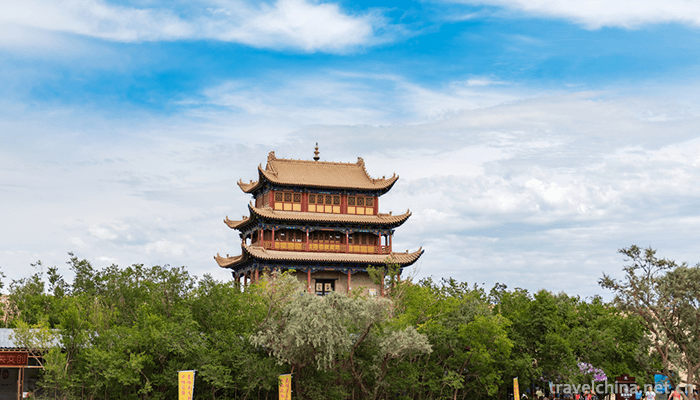
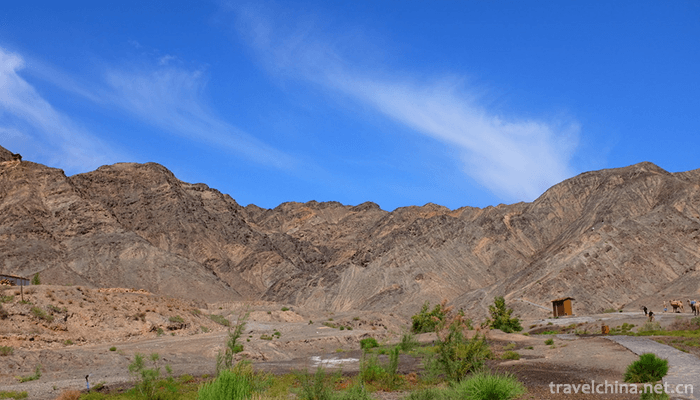
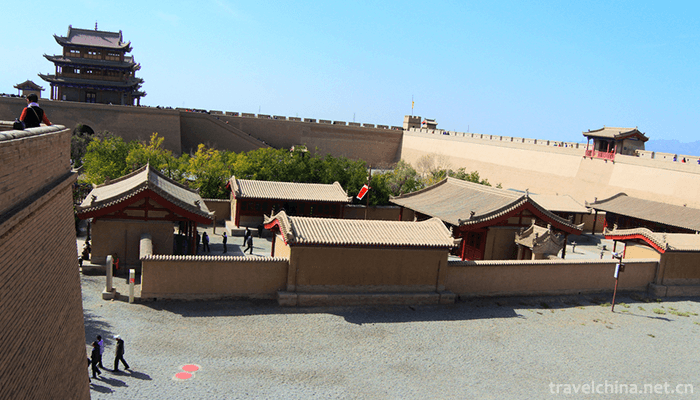
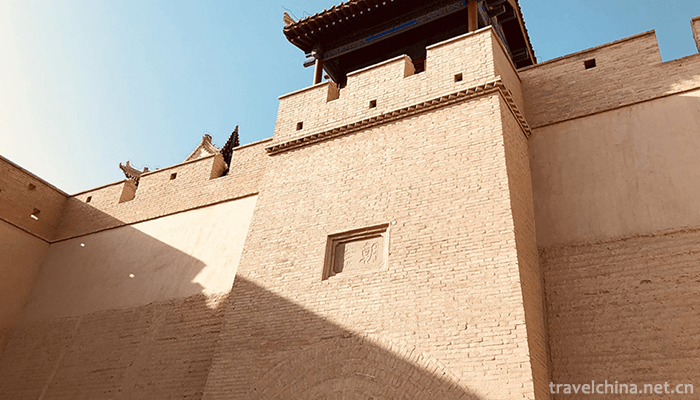
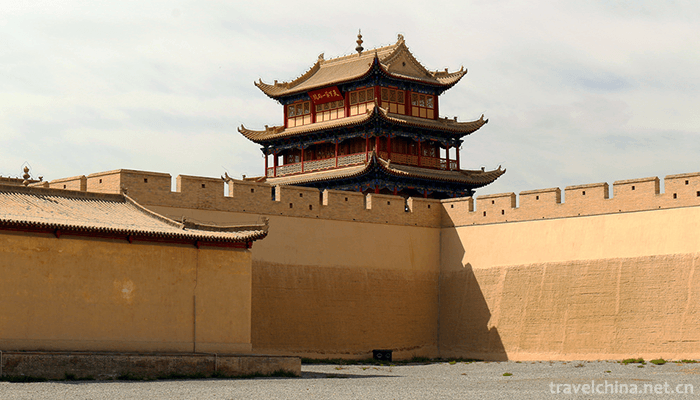
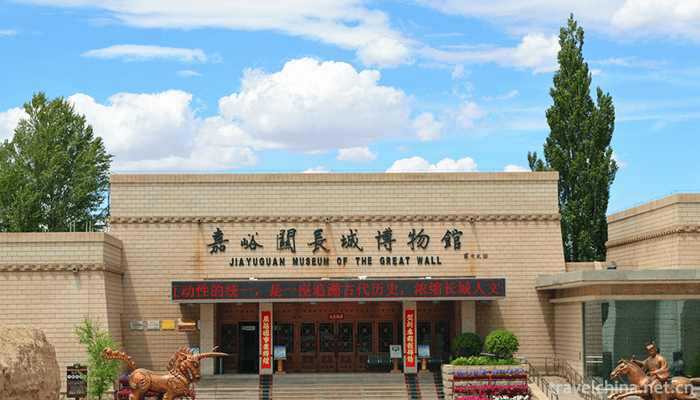

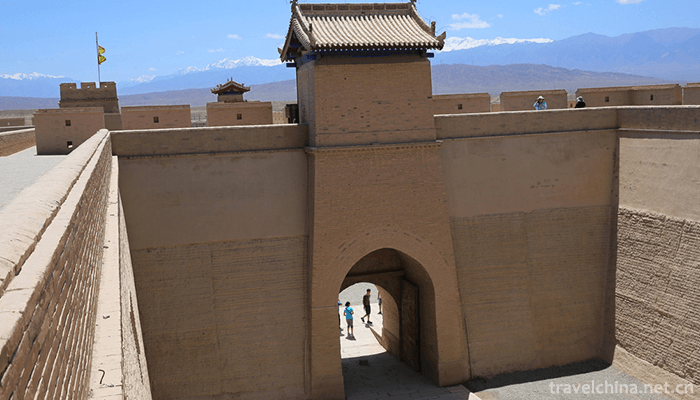
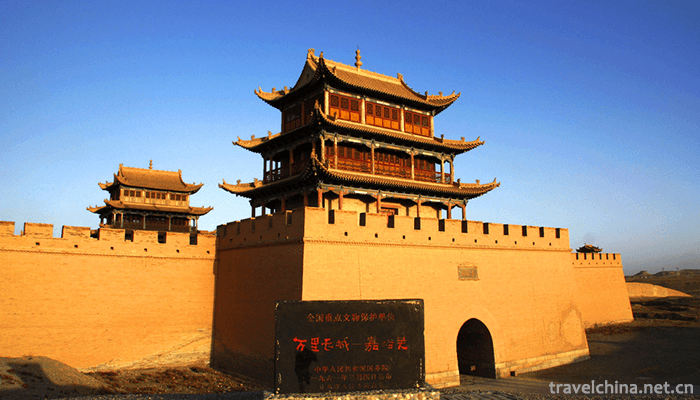
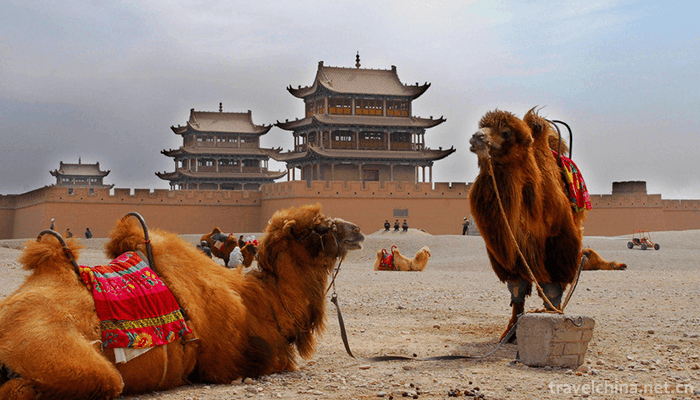
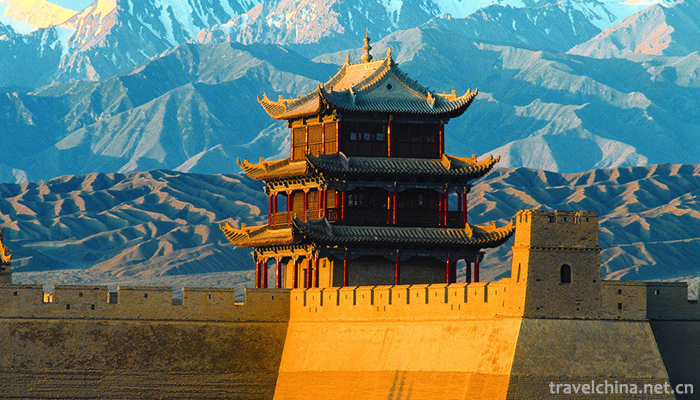
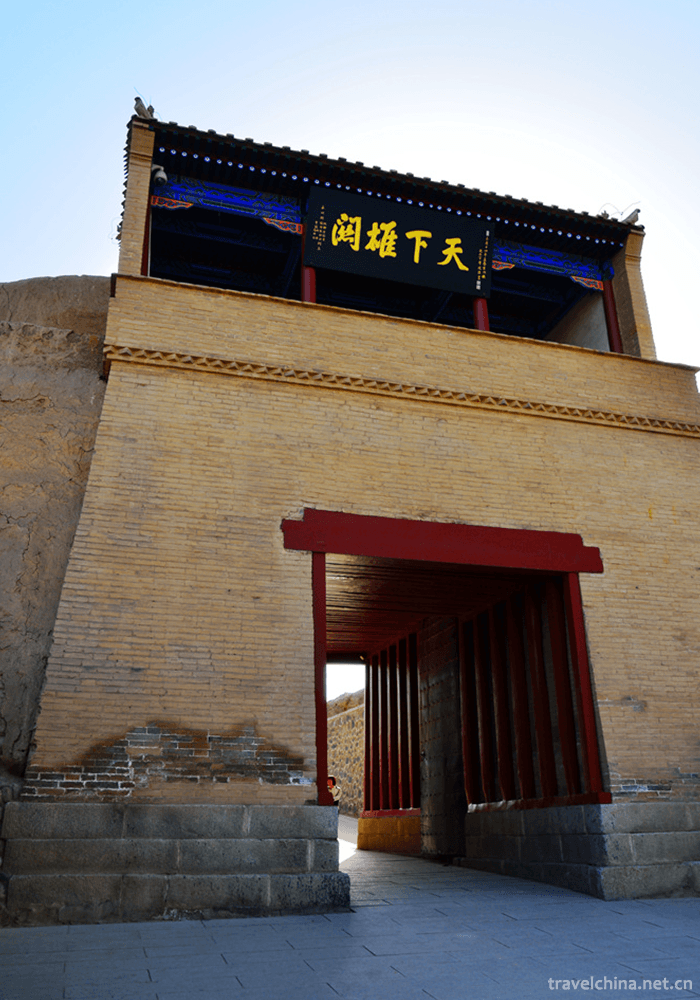
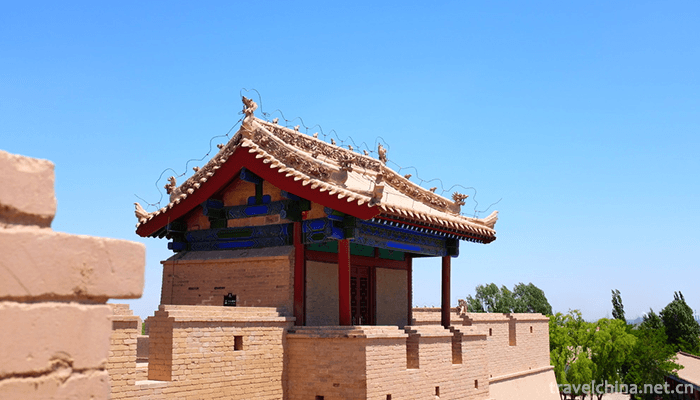
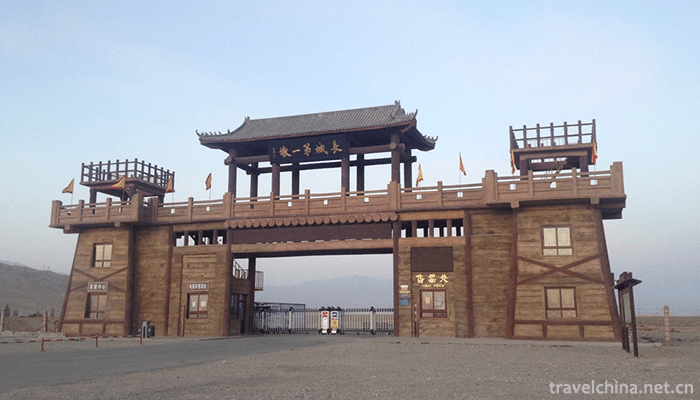

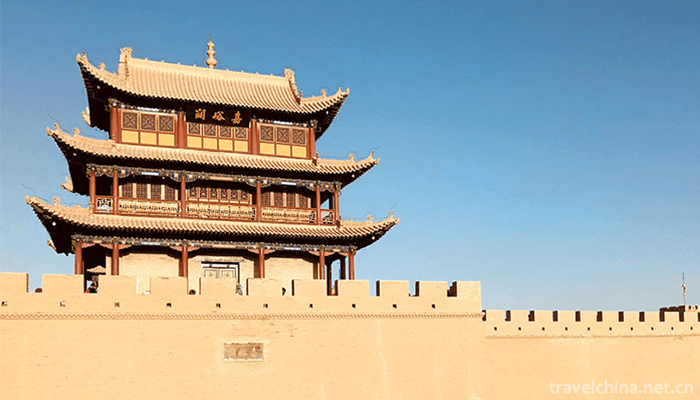
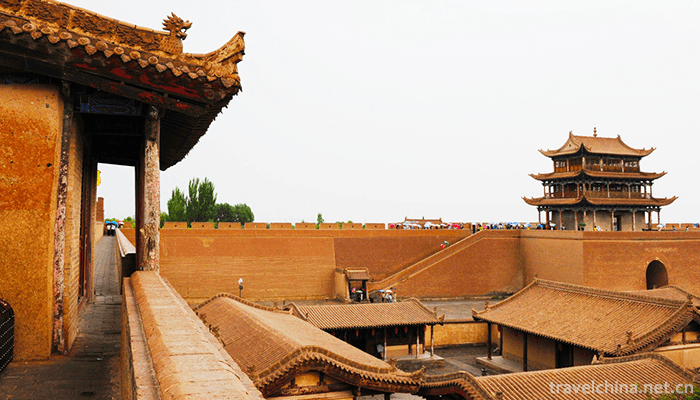
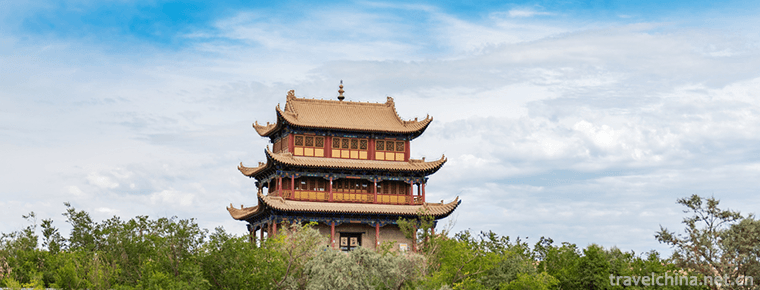
Jiayuguan cultural relics scenic spot
-
Black Valley Scenic Area
Black Valley, National AAAAA Tourist Scenic Spot, National Forest Park, National Geopark, China's Best Leisure Mountain, China's Best Green Low Carbon Tourist Leisure Spot
Views: 181 Time 2018-12-12 -
Huangguoshu Waterfalls Scenic Area
Huangguoshu Scenic Spot is a key national scenic spot, located in southwest Guizhou Province, 128 kilometers away from Guiyang City, the capital of Guizhou Province
Views: 217 Time 2018-12-12 -
Lingwu Shuidonggou Tourist Area
Shuidonggou Ancient Human Culture Site is located in Shuidonggou Village, Linhe Town, Linwu City, Ningxia. It is 30 kilometers south of Lingwu City, 19 kilometers west of Yinchuan City
Views: 199 Time 2018-12-12 -
Xixi Wetland Tourist Area
Xixi National Wetland Park is located in the west of Hangzhou City, Zhejiang Province. It is only 6 kilometers away from Wulin Gate, the main city of Hangzhou, and 5 kilometers away from West Lake.
Views: 156 Time 2019-02-25 -
Mira Gahei Mile La Ga Hei
Mira Gahei, Dongxiang folk tale. Also known as "Moonlight Mirror". Among the Dongxiang people, there are also poem-style stories of "Mira'er Hei", which are intermingled in rhyme a
Views: 122 Time 2019-06-04 -
Nanping Opera
Nanping Opera is a folk art popular in the area of Jiuzhaigou County (former Nanping County) on the Northwest Plateau of Sichuan Province. It was once called "Nanping Pipa Playing and Singing&quo
Views: 313 Time 2019-06-07 -
Tajik costumes
Tajik costume refers to the costume with distinct ethnic characteristics of Tajik. Tajik people mainly live in the Pamir Plateau with cold climate. Their economic life is mainly animal husbandry and a
Views: 347 Time 2019-06-17 -
Yihuang Opera
Yihuang Opera, formerly known as Yihuang Ban and Yihuang Diao, is one of the national intangible cultural heritage in Yihuang, Nancheng, Nanfeng and Guangchang counties of Jiangxi Province, as well as
Views: 348 Time 2019-07-12 -
Batang Tuanjie steamed stuffed bun
The Tuanjie steamed bun was not invented by the 18th army when it entered Batang. In the old days, Tuanjie steamed bun, to be exact, was made by Batang ancestors hundreds of years ago. Moreover, it has been handed down to the present day.
Views: 250 Time 2020-12-06 -
Climate of Luzhou
Luzhou city belongs to subtropical humid climate zone, and the three-dimensional climate is obvious in the southern mountainous area. It has high temperature, sufficient sunshine, abundant rainfall, four distinct seasons, long frost free period, temperature, light and water in the same season
Views: 388 Time 2020-12-14 -
Nanchongs tertiary industry
In 2019, investment in real estate development in Nanchong will increase by 23.6% compared with that in 2018. The construction area of commercial housing was 31.8726 million square meters, an increase of 23.5% over that in 2018, of which the newly started
Views: 396 Time 2020-12-17
